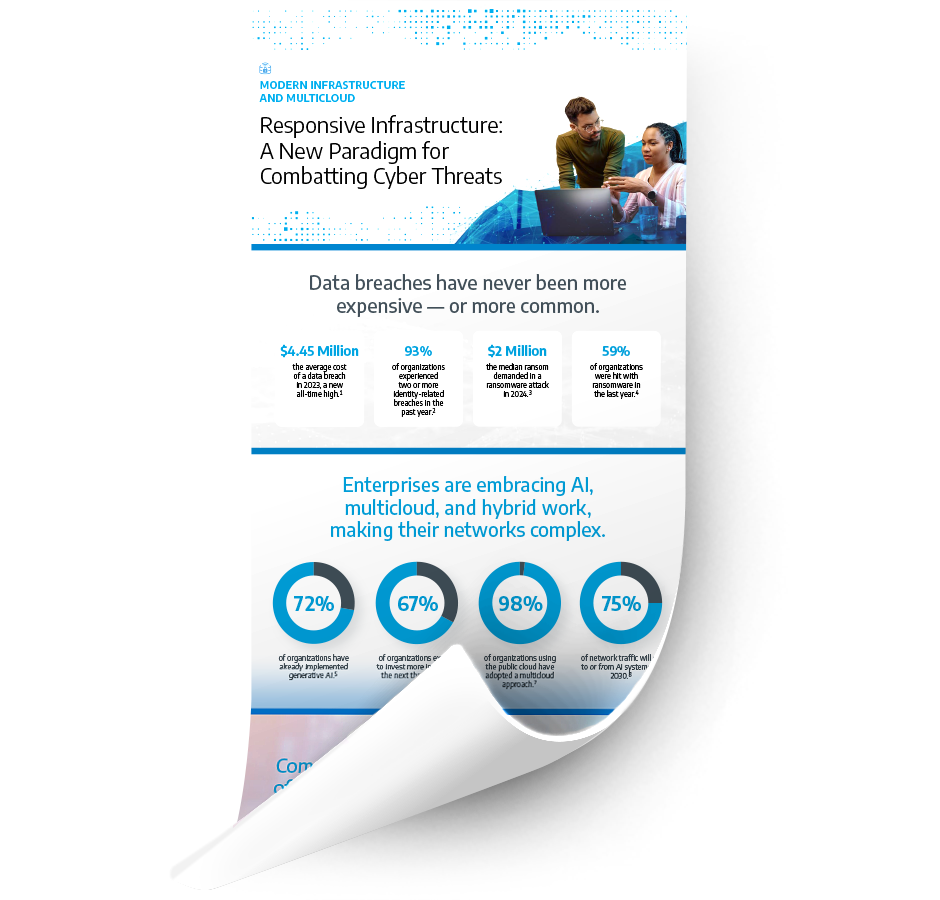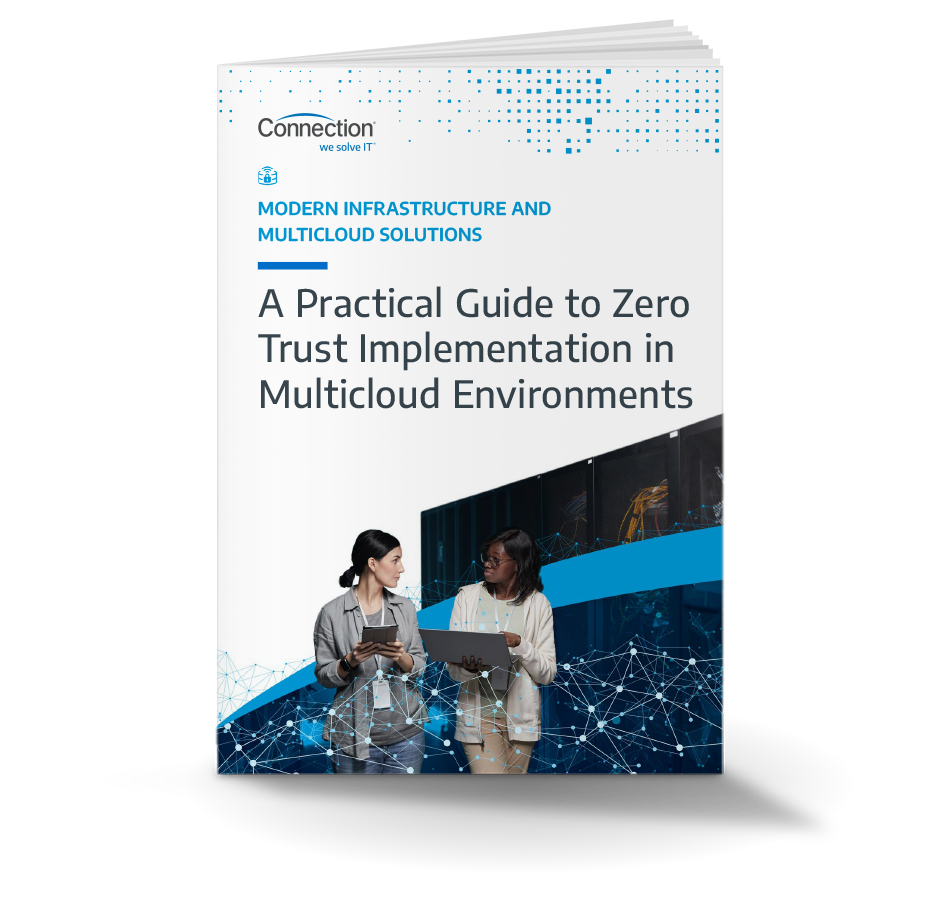Protecting Data and Devices at Scale
Enabling Performance and Security: Why IT Departments No Longer Have to Choose with Modern Hybrid Infrastructures
With cyberattacks on the rise, businesses face increasing threats to their IT systems. By adopting modern security approaches, organizations can strengthen their defenses and minimize the damage caused by unpredictable breaches.Read this article for key insights that include:
Protecting Data and Devices at Scale
Enabling Performance and Security: Why IT Departments No Longer Have to Choose with Modern Hybrid Infrastructures
With cyberattacks on the rise, businesses face increasing threats to their IT systems. By adopting modern security approaches, organizations can strengthen their defenses and minimize the damage caused by unpredictable breaches.Read this article for key insights that include:
Cyberattacks Are on the Rise
The Maryland business was just one of the estimated 15,000 auto dealerships across the U.S. and Canada impacted by the attack by an Eastern European criminal group in June 2024. Managers arrived at work only to find that they had been locked out of the system they depended on to run their businesses, including that most critical function of all: selling cars.
The attack was just the latest in a rising trend of cyberattacks on businesses, workplaces, and the software companies depend on for operations. According to Verizon’s 2024 Data Breach Investigations Report (DBIR), threats to IT infrastructure are on the rise. Attacks targeting IT vulnerabilities nearly tripled in the last year, increasing 180%.
Fortunately, modern IT infrastructure leveraging Zero Trust principles and best practices can help businesses avoid this fate.
Cyberattacks Are on the Rise
The Maryland business was just one of the estimated 15,000 auto dealerships across the U.S. and Canada impacted by the attack by an Eastern European criminal group in June 2024. Managers arrived at work only to find that they had been locked out of the system they depended on to run their businesses, including that most critical function of all: selling cars.
The attack was just the latest in a rising trend of cyberattacks on businesses, workplaces, and the software companies depend on for operations. According to Verizon’s 2024 Data Breach Investigations Report (DBIR), threats to IT infrastructure are on the rise. Attacks targeting IT vulnerabilities nearly tripled in the last year, increasing 180%.
Fortunately, modern IT infrastructure leveraging Zero Trust principles and best practices can help businesses avoid this fate.
Attacks targeting IT vulnerabilities nearly tripled in the last year

Growing Threats to IT
Zero-day attacks hit software vulnerabilities unknown to the software or antivirus vendors before they occur—that is, before they can issue patches. The term “zero day” initially referred to an attack before or on the first day of the vendor’s awareness of the vulnerability. However, it has also evolved to include vulnerabilities for which no patch or fix is available.
Severe consequences can result from zero-day attacks, including unauthorized access to sensitive information and identity theft. Furthermore, disruption of computer systems can risk livelihoods as hackers attempt to collect ransomware payments in exchange for putting critical systems back online.
By definition, zero-day attacks can’t be anticipated, making it difficult to know where, when, and how they will occur. But that problem also holds the solution as organizations and vendors turn to defenses based on Zero Trust.

Change Happens. EXPERTISE WINS.™
Power up your team with the latest modern infrastructure solutions to drive greater productivity, collaboration, and security.Talk to an Expert
Zero Trust Defense
Zero Trust is a modern security model and approach to cybersecurity that assumes no user, device, or network should be automatically trusted—in or out of the organization’s network perimeter.It works by authenticating users, devices, and connections with every request, based on all available data points. Zero Trust principles require least-privilege access. In other words, they limit users to no more than just-in-time and just-enough access.
Rather than trying to anticipate where the next breach will occur, infrastructures designed with Zero Trust principles assumes a breach can happen anywhere, any time. Such architectures minimize the blast radius of any breach through segmented access. Like the bulkheads in a submarine, a breach in one segment doesn’t compromise the others.
End-to-end encryption for data in transit and at rest further safeguards data, as do sophisticated analytics that improve detection.
Key components of Zero Trust implementation typically include:
- Robost identify verification processess, including multifactor authentication
- Device health validation, typically at the time bootup, and without slow downs
- Network micro segmentation
- Continuous monitoring and validation, often enabled by artificial intelligence
- Network access control systems for endpoint devices
- Responsive security controls
- Proactive threat hunting
- An incident response operations team (internal or third-party) with 24x7 access and aggressive SLAs
- Employee security awareness training reinforced by periodic randomized audits, including simulated spearfishing or social engineering attacks
Boosting Performance and Security
Another key piece of the puzzle is Extended Detection and Response (XDR), which integrates UEBA capabilities with broader monitoring across endpoints—including end-user devices such as laptops and tables, IOT devices, application endpoints and code repositories, kiosks and digital signage, point-of-sale terminals, and wireless handheld units and printers—to give IT managers a high-level view of an organization’s tech stack and status.
By correlating data from various sources, XDR can detect complex, multi-vector threats missed by individual point solutions. The result is an improved overall security posture that doesn’t add significant performance overhead.
XDR also takes the load off IT teams by reducing alert fatigue. It typically uses AI and machine learning to prioritize alerts while minimizing false positives. XDR lets IT teams focus on genuine threats, improving both security and operational performance.

Responsive infrastructure is the name of the game here, and it’s all part of a holistic approach to security.
A Holistic Approach to Security
Holistic security starts with buy-in from executive leadership and your organization’s departments. Without buy-in and centralized governance, organizations expose themselves to additional risk. For example, dispersed teams—or worse yet: shadow IT—working in the cloud without the benefit of an organization-wide security framework may end up implementing competing tools for Zero Trust. Any attention to Zero Trust is better than none. But without an overarching strategy, gaps may remain. Instead, it’s best to make decisions that span clouds, fit within an overall security framework, and come with the blessing of cybersecurity teams.An independent solution provider can help organizations achieve these strategic goals with industry-leading solutions with intrinsic security features. An outside partner can also advise on automated security policies and application deployment templates that minimize human error and configuration drift.
A great way to start is by leveraging your solution provider’s portfolio of external and internal threat assessments, security health checks, Dark Web monitoring, and governance and compliance framework reviews. Combined, such assessments inform a customized “tactical” remediation plan and a strategic multi-phasic security enhancemen roadmap.
At Connection, our recommendations are based on deep experience in IT infrastructure and domain expertise for individual industries. We start by developing a thorough understanding of where our customers are and where they want to go.
Check out our infographic for facts and figures on cyber threats and responsive infrastructure.

Connection is your partner for modern infrastructure and cybersecurity solutions and services. From hardware and software to consulting and customized solutions, we’re leading the way in infrastructure modernization.
Talk to our experts today!
Get StartedConnection Community
A Pulse on the State of Cybersecurity in...
The healthcare industry is currently facing an unprecedented wave of cyber threats. In 2024 alone, healthcare organizations experienced an average... Read More
Top Trends in Manufacturing Factory...
The manufacturing industry is undergoing a practical transformation—driven by the necessity for improved efficiency, enhanced security, and a future-ready infrastructure.... Read More
OT Cybersecurity Can No Longer Be Ignored
The threat of cyberattacks is escalating at a terrifying rate. A staggering 84% of businesses surveyed experienced at least one... Read More
TechSperience Episode 131: Securing Industry 4.0
The manufacturing sector is racing towards a digital future, but this innovation brings an explosion of cyber threats. This episode... Read More
Cyber Threats in Education and What to Do...
The top target for ransomware attacks isn’t the healthcare industry or the critical infrastructure as many may assume. It is... Read More





